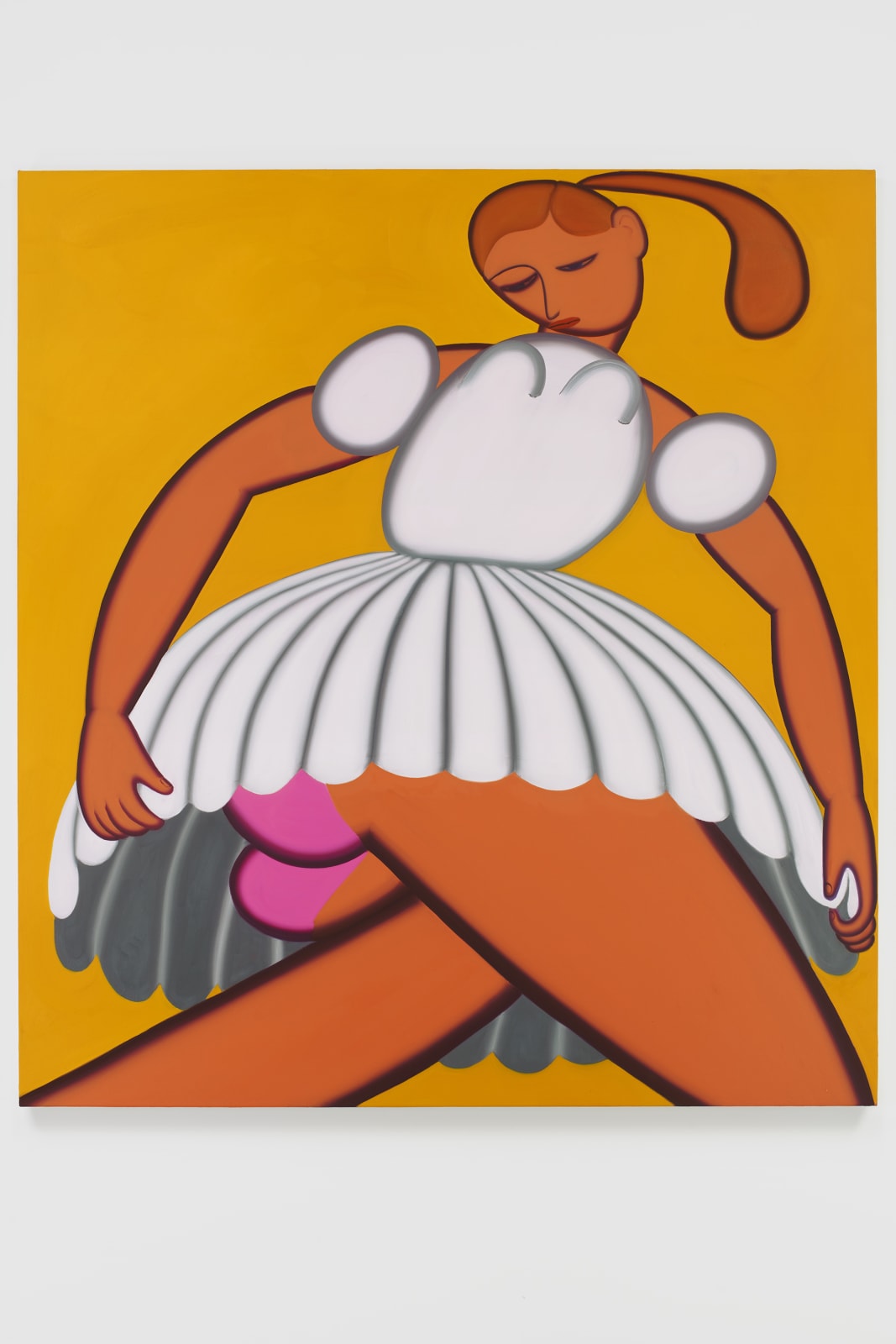-
Artworks







Shame, 2020
Oil on canvas71 x 65 in
180.3 x 165.1 cmSoldFurther images
In Weaver’s work, the body itself becomes scenario: playful, sweeping lines and dense planes of luminous color act as linguistic elements, each directing its own physical weight and affect onto...In Weaver’s work, the body itself becomes scenario: playful, sweeping lines and dense planes of luminous color act as linguistic elements, each directing its own physical weight and affect onto her female subjects. In Shame, a female character’s stride across the picture plane knowingly centers an upskirt view within the composition. With a gesture that could be read as a suggestive “flash” or an elegant plié, her pleated skirt is lifted into a tent-like form that harkens to the Triadisches Ballet costumes of Oskar Schlemmer. Weaver imagines the dress as “a biological or biomorphic extension of her body, maybe an anemone or a wilting flower... it functions as a way to extend her body language.” Gravity is cast onto this character’s pliable body, which takes on a sense of sculptural mass with surfaces built by numerous layers of matte oil paint. This is countered by the subject’s deliberate, defiantly buoyant momentum across the picture plane, further encouraged by Weaver’s dramatic use of downside-up perspective.Exhibitions
Grace Weaver: STEPS, James Cohan, New York, NY, July 15 - September 12, 20202of 2













